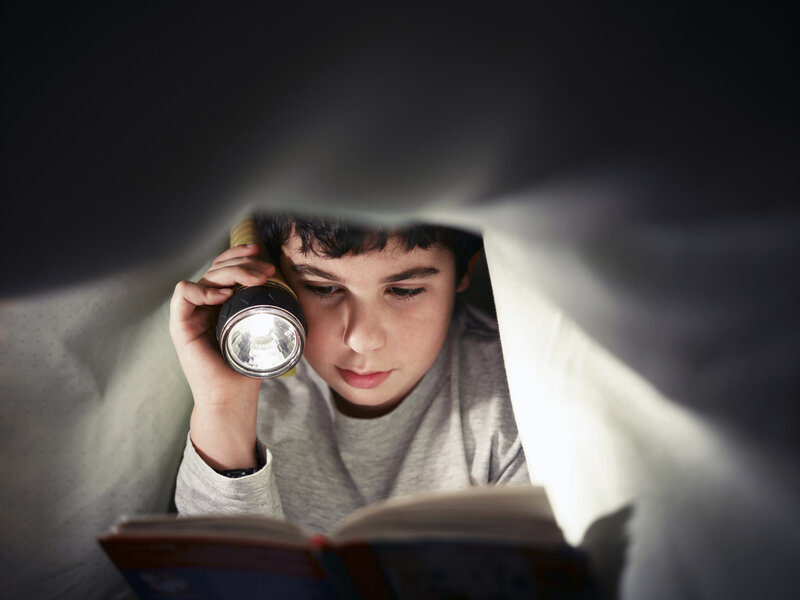Medical Recommendations on Reading Distance

Chart illustrating the average distance between the eyes and reading material (Journal of the Eye, 2015)
According to the Journal of the Eye (2015), the ideal reading distance is 30–40 cm for children and 35–45 cm for adults. This range allows the eyes to maintain a moderate accommodative state, preventing the ciliary muscles from over-contracting — a primary cause of eye strain and myopia progression.
An easy rule of thumb: The distance between your eyes and the book should be about the length of your forearm. If you can extend your arm and just touch the page with your fingertips, that’s a safe distance.
Research from the University of Hong Kong (2023) found that children who read at a distance shorter than 25 cm were 1.7 times more likely to experience faster myopia progression than those maintaining a 30–35 cm distance. Prolonged close-up reading can even alter the shape of the eyeball, contributing to school myopia — an increasingly common problem in Vietnam.
Differences Between Reading on Paper and Screens
Although both are near-vision activities, reading on electronic screens places more strain on the eyes.
- Digital screens flicker continuously, which fatigues the eyes faster than printed paper.
- Children blink 60% less often, causing dryness and eye discomfort.
- Blue light from phones and tablets causes temporary accommodative disturbance and disrupts sleep cycles.
Therefore, the reading distance for electronic devices should be 5–10 cm longer than for books — about 35–45 cm for smartphones, 50–60 cm for laptops, and at least 1 meter for TVs. Also, enable blue light filters (Eye Comfort or Night Shift mode) and follow the 20–20–20 rule:
Every 20 minutes of near work, look at an object 20 feet (6 m) away for at least 20 seconds.
Posture and Lighting

Illustration of correct posture, reading distance, and phone-holding position
Proper distance is only effective when combined with correct posture and adequate lighting. Experts from the National Eye Institute (NEI) recommend:
- Sit upright with the neck tilted slightly downward (10–15°).
- Keep the eyes angled downward toward the page — avoid leaning too close to the desk.
- Light should come from the left side (for right-handed readers) to prevent shadowing.
- Maintain illumination of at least 300 lux (equivalent to a 5–7 W LED study lamp).
Insufficient or glaring light causes pupil dilation and increases accommodative effort. In dim environments, children tend to lean closer, reducing their reading distance below 25 cm — a small habit that increases myopia progression risk by 30–40%, according to the Journal of Ophthalmology (2021).
Continuous Reading Time and Eye Fatigue
Many ophthalmologic studies indicate that prolonged accommodative strain accelerates myopia progression. A study by Zheng et al. (2022) on 2,000 Chinese students found that children who read or wrote continuously for over 45 minutes without breaks showed 38% faster myopia progression compared to those who took regular pauses.

Children reading in dim light experience accommodative strain and higher myopia risk when the distance is too close.
When reading closely for extended periods, the ciliary muscle must contract continuously to maintain focus, making it difficult for the eyes to relax. Therefore:
- Primary school children: read for only 20–30 minutes at a time, then rest their eyes.
- Middle and high school students: no more than 40 minutes per session.
- Adults working on computers: take at least a 5-minute break every hour.
Combining proper distance, moderate reading duration, and regular breaks can significantly reduce accommodative fatigue and slow myopia progression by 0.3–0.5 diopters per year (International Myopia Institute, 2021).
Habits to Maintain Proper Distance and Prevent Myopia Progression
Maintaining correct reading distance requires consistent visual habits. Ophthalmologists recommend:
- Use a tilted bookstand (30–40°) to avoid excessive head bending.
- Ensure the desk and chair are at the correct height: elbows and tabletop form a 90° angle when seated.
- Practice distance viewing every hour — look out the window or at objects 5–10 m away for 1–2 minutes.
- Spend at least 2 hours outdoors daily — natural light helps inhibit axial elongation.
- Have regular eye exams every 6 months to monitor early signs of progression.
A National Eye Health Survey (Australia, 2020) found that students maintaining a reading distance ≥30 cm combined with 2 hours of outdoor activity daily reduced their myopia progression risk by 50% over two years compared to noncompliant peers.
Reading distance is more than just a number — it’s a crucial factor for long-term visual health. Combining proper posture, sufficient lighting, rest, and outdoor activity forms a natural shield to protect vision and slow the progression of myopia.
Start today: adjust your posture, measure your distance — because bright, healthy eyes are an irreplaceable gift.

 vi
vi 23-Oct-2025
23-Oct-2025










 0916.741.763
0916.741.763 Appointment
Appointment